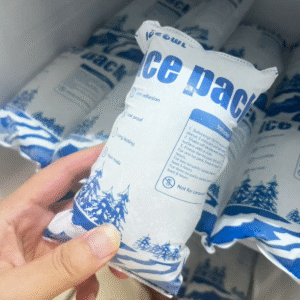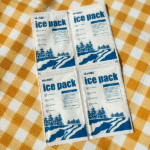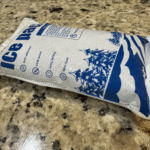Packing a cooler with dry ice is a game-changer when you need to keep perishable goods frozen for extended periods. Whether you’re embarking on a long road trip, preparing for a camping adventure, or shipping temperature-sensitive goods, dry ice is an ideal solution. This guide will walk you through the step-by-step process of packing a cooler with dry ice, highlighting safety precautions and expert tips to ensure the most effective and secure cooling.
-
How do I safely pack a cooler with dry ice?
-
What precautions should I take when handling dry ice?
-
How do I maintain the proper temperature for shipping or storage?
-
What are the best coolers for dry ice packing?
How Do I Safely Pack a Cooler with Dry Ice?
Packing a cooler with dry ice requires a systematic approach to ensure that both safety and cooling efficiency are maximized. By following these critical steps, you can ensure the most effective use of dry ice:
-
Choose the Right Cooler
Ensure you have a well-insulated cooler capable of withstanding the extreme cold of dry ice. Hard-sided coolers are generally recommended as they offer superior insulation and minimize heat exposure. Opt for high-quality, tightly sealed coolers like YETI or Grizzly for best results. -
Pre-Chill the Cooler
Before adding dry ice, place regular ice inside to pre-chill the cooler. This ensures the contents maintain a cold temperature immediately and reduces the workload on the dry ice. -
Layering the Cooler
Dry ice should be placed in a layered manner to maximize its cooling power. For frozen items, place dry ice at the bottom, followed by a layer of insulation like cardboard, then the frozen items on top. For chilled items, place dry ice at the top as cold air sinks. -
Seal the Cooler Properly
Make sure the cooler is airtight but allow some ventilation. As dry ice sublimates into carbon dioxide gas, the cooler should have an opening or vent to release the gas safely, preventing pressure buildup.
Why Is Dry Ice Important for Packing Coolers?
Dry ice is essential for maintaining freezing temperatures over extended periods. Contrairement à la glace ordinaire, qui fond dans l'eau, dry ice sublimates directly into gas, keeping the cooler dry. This makes it perfect for shipping temperature-sensitive products, like vaccines, fruit de mer, or frozen foods, without the risk of moisture damage.
Best Coolers for Dry Ice Packing
The right cooler is crucial for maintaining the effectiveness of dry ice. Here’s a comparison of cooler types:
| Cooler Type | Pros | Cons | Meilleure utilisation |
|---|---|---|---|
| Hard-Sided Cooler | Superior insulation and durability | Bulkier and heavier | Long trips, heavy-duty cooling |
| Soft-Sided Cooler | Léger et portable | Less insulation | Short-term trips, small shipments |
| Dry Ice-Specific Cooler | Designed to handle dry ice safely | Expensive | Sensitive shipments requiring precise temperature control |
Essential Tips for Packing Dry Ice in Coolers
-
Always Wear Gloves
Dry ice can cause frostbite on contact, so always use insulated gloves when handling it. -
Separate Food from Dry Ice
Never place food or products directly in contact with dry ice. Use a layer of insulation, like cardboard or cloth, to create a barrier. -
Overpack Dry Ice
It’s better to have extra dry ice than not enough. Overpacking ensures the cooler stays cold for the entire journey.
Safety Precautions When Handling Dry Ice
Handling dry ice can be hazardous if proper precautions are not followed. Here are essential guidelines to ensure safety:
-
Wear Protective Gloves:
Always wear insulated gloves to avoid frostbite. Do not touch dry ice with bare skin. -
Ventilation Is Key:
Dry ice sublimates into carbon dioxide gas, which can be hazardous in confined spaces. Always ensure good ventilation to avoid suffocation. -
Avoid Sealed Containers:
Dry ice produces gas as it sublimates. Never store it in a sealed container as it could build up pressure and cause an explosion. Use coolers with vents instead.
Why Are Safety Precautions So Crucial?
The extreme cold of dry ice can cause severe injuries, and improper ventilation can lead to the dangerous buildup of carbon dioxide. Ensuring proper safety procedures protects both you and your products.
How Do I Maintain Proper Temperature for Shipping or Storage?
Proper temperature control is critical for maintaining the quality of your perishable goods. Here’s how to keep your shipment cold:
-
Use Temperature Monitors
Track the internal temperature of the cooler using data loggers to ensure it stays within the desired range. -
Layer Dry Ice with Regular Ice
Combining dry ice with regular ice can help extend the cooling duration and balance the temperature. -
Minimize Opening the Cooler
Every time you open the cooler, you let warm air in, which speeds up the sublimation process. Limit access to the cooler to maintain low temperatures.
Best Practices for Temperature Control
| Temperature Control Method | Avantages | Why It’s Effective |
|---|---|---|
| Data Loggers | Monitors temperature in real-time | Ensures products remain within the required temperature range |
| Insulated Covers | Helps retain cold air | Reduces the rate of sublimation and keeps temperatures stable |
| Layering Dry Ice and Regular Ice | Provides balanced cooling | Controls the sublimation rate and extends cooling duration |
2025 Trends in Dry Ice Use for Cold Chain Logistics
Emerging Trends in Dry Ice Technology
The use of dry ice continues to evolve in 2025 with advancements in technology and new practices that enhance the efficiency and safety of dry ice in cold chain logistics:
-
Advanced Monitoring Systems:
New sensors provide real-time temperature data, making it easier to monitor shipments and ensure products remain at the correct temperature. -
Eco-Friendly Dry Ice:
There’s a growing interest in biodegradable coolants and more sustainable dry ice solutions, helping to reduce the environmental impact. -
Automated Packing Systems:
Automated systems are increasingly being used to pack and monitor dry ice, improving efficiency and reducing human error.
Insistance au marché
The global cold chain logistics market is projected to grow by 10% annually in 2025, driven by the rising demand for temperature-sensitive goods. Companies are investing in advanced dry ice solutions to meet this demand, ensuring reliability and cost-effectiveness.
Questions fréquemment posées
Q1: How much dry ice do I need for a 48-hour trip?
For a 48-hour trip, approximately 10-15 pounds of dry ice should suffice, depending on the cooler size and insulation.
Q2: Can I use dry ice with regular ice in the same cooler?
Oui, combining dry ice with regular ice can be effective. Just ensure the dry ice is placed at the bottom, with regular ice on top.
Conclusion and Actionable Tips
Principaux à retenir:
-
Choose the right cooler, such as a hard-sided, insulated cooler.
-
Always wear gloves when handling dry ice.
-
Monitor the temperature to ensure it stays within the required range.
Actionable Steps:
-
Select a high-quality cooler and pre-chill it for better cooling efficiency.
-
Overpack dry ice to ensure sufficient cooling throughout the journey.
-
Use a temperature monitoring system to track internal temperatures during transit.
By following these tips and safety precautions, you can make the most of dry ice for safe, effective cooling in your coolers.
À propos du tempk
Et tempk, we specialize in innovative cold chain solutions to keep your temperature-sensitive products safe during transport. With state-of-the-art coolers, dry ice management, and expert advice, we provide the tools and knowledge necessary for a secure shipping experience.
Need expert advice? Contact us today to learn more about our cold chain logistics services.
























